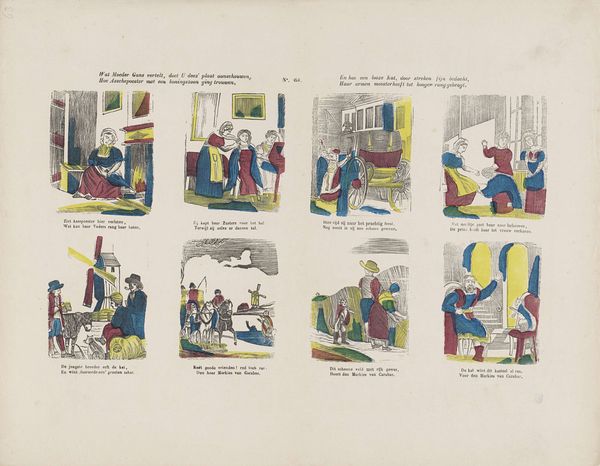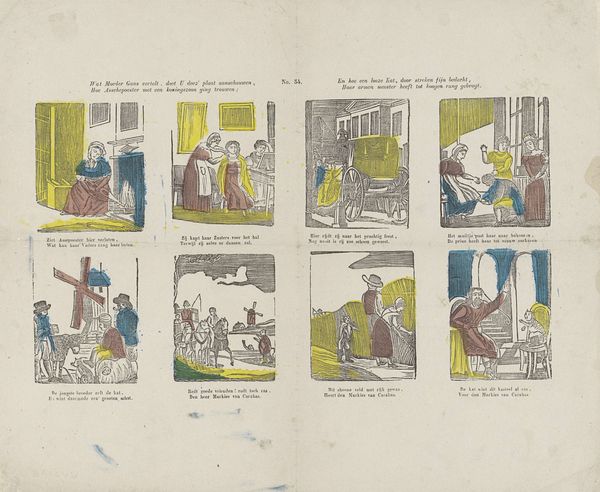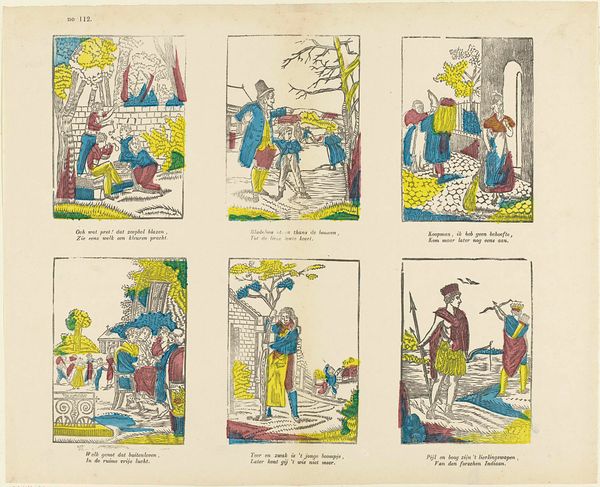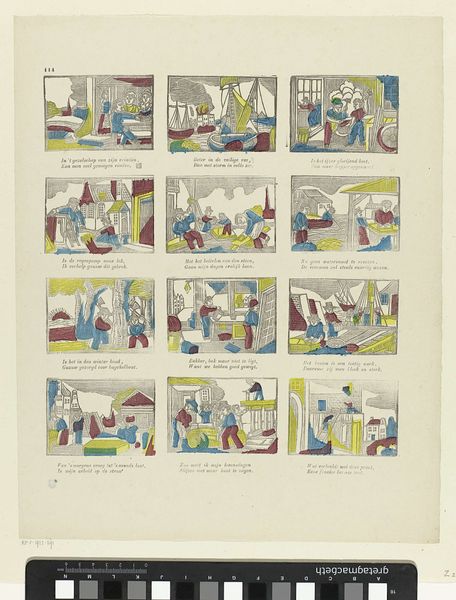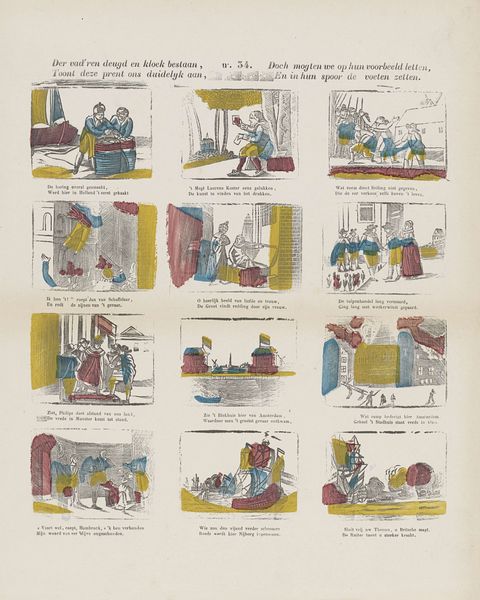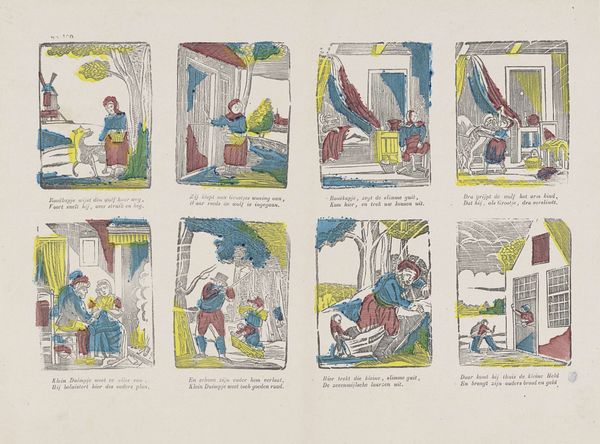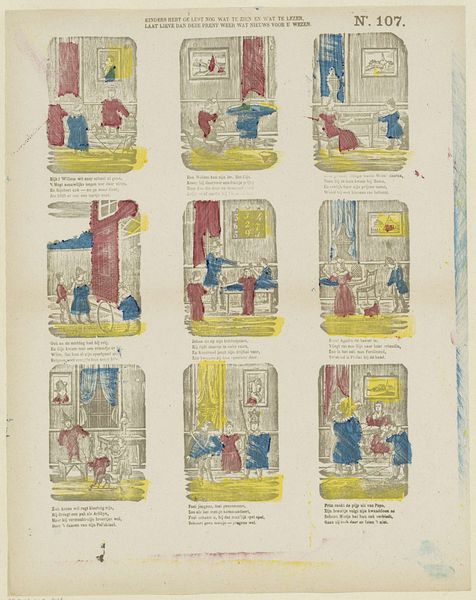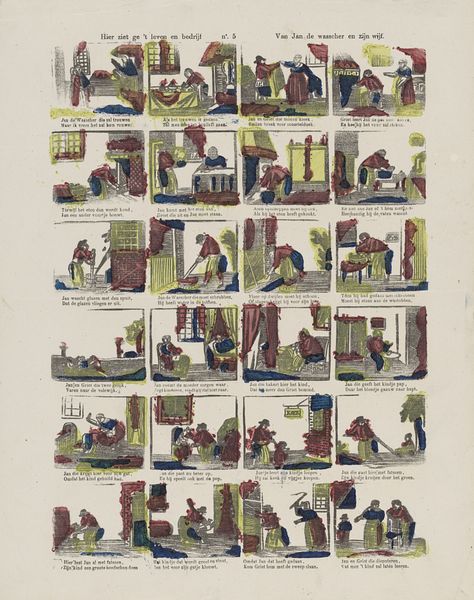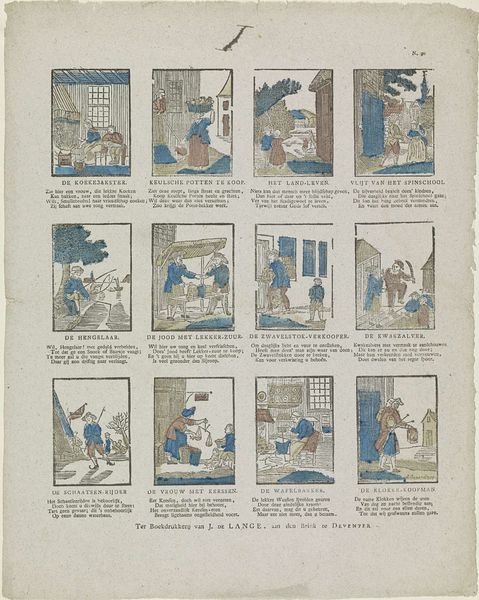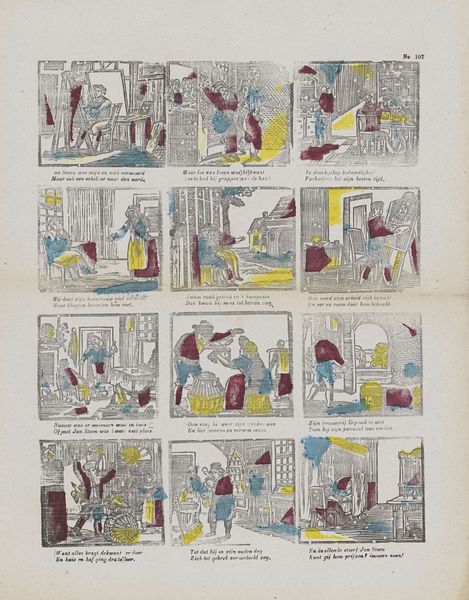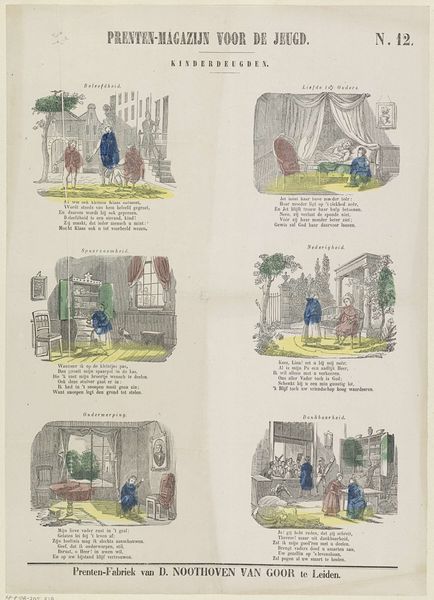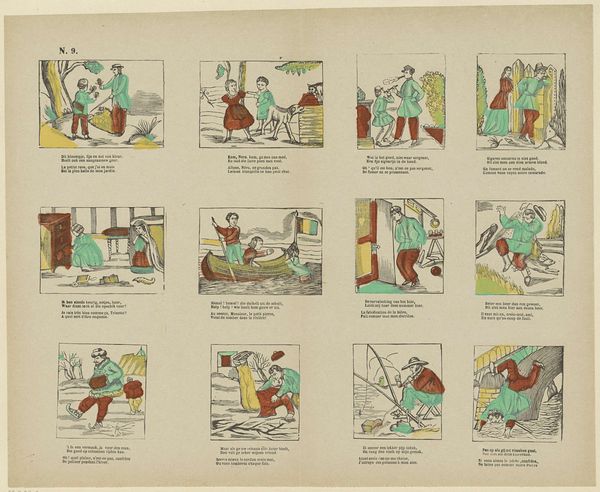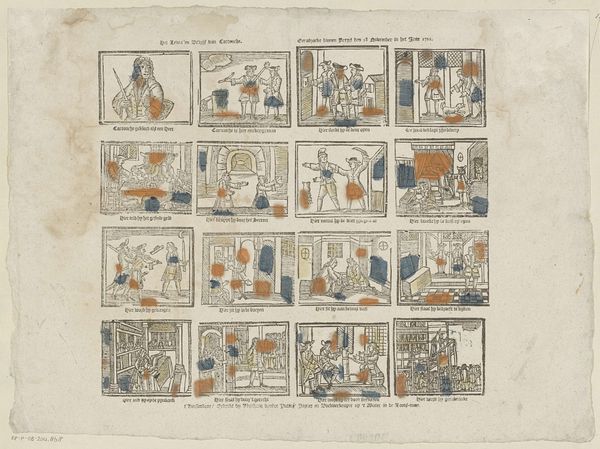
Wat Moeder Gans vertelt, doet u deez' plaat aanschouwen, / Hoe Asschepoester met een koningszoon ging trouwen. / En hoe een looze kat, door streken fijn bedacht, / Haar armen meester heeft tot hogen rang gebragt 1848 - 1881
0:00
0:00
#
quirky sketch
#
narrative-art
#
dutch-golden-age
# print
#
sketch book
#
personal sketchbook
#
idea generation sketch
#
sketchwork
#
sketchbook drawing
#
watercolour illustration
#
genre-painting
#
storyboard and sketchbook work
#
sketchbook art
#
watercolor
Dimensions: height 303 mm, width 385 mm
Copyright: Rijks Museum: Open Domain
Curator: Here we have an intriguing print dating from 1848 to 1881, attributed to Lutkie & Cranenburg and currently residing in the Rijksmuseum. Its lengthy title translates to something like, "What Mother Goose Tells, you see this picture, / How Cinderella went to marry a prince. / And how a cunning cat, through tricks finely devised, / Has brought her poor master to high rank." Editor: It looks like a storyboard! The style is loose, sketch-like. And it looks almost hand-colored. The lines are coarse, but I'm drawn in immediately by the naive perspective and the restricted palette. Curator: Exactly! Notice how the artist condenses multiple narratives into a single page, like a visual summary of familiar tales. Each panel serves as a miniature stage, complete with its own set of symbolic actors and settings. Consider, for example, how Cinderella, in her rags, embodies the potential for transformation and social mobility. Editor: Right. The "poor master" elevated by his clever cat – a commentary on labor and social mobility? Were these intended for a working class audience or consumption by the rising bourgeois who identified with characters successfully climbing the ranks? It makes you wonder who printed it and under what conditions, what kinds of pigments are they using and what paper and how were these books distributed and sold. Were children supposed to learn these stories by viewing these printed materials? Curator: I believe these kinds of prints served various didactic purposes. Fairy tales aren't just entertainment; they're cultural scripts, imparting morals and values about social conduct, gender roles, and even political ideology. Note also the windmill motif. This suggests an aspiration or commentary related to the Netherlands in the time it was made, perhaps about its agricultural resources or self-reliance. Editor: All valid. But look closely at the materials; the textures! It almost feels folk-art or even craft rather than "high art" due to those material and manufacturing elements. It really straddles that border. Curator: Perhaps. This print speaks volumes about the symbolic language embedded within popular culture, even back then. Editor: Agreed. Looking at it through a lens of production, of printing methods, tells its own story as well. Fascinating, the things an image can convey.
Comments
No comments
Be the first to comment and join the conversation on the ultimate creative platform.
